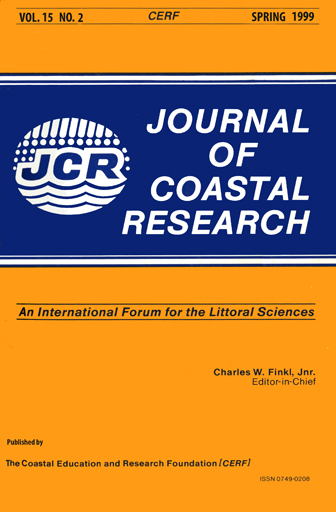A Review of Net Offshore Bar Migration with Photographic Illustrations from Wanganui, New Zealand
Keywords:
Multi-bar coast, image processing, morphodynamics, geomorphological scales.Abstract
Field studies, processes and mechanisms associated with net offshore bar migration are reviewed. Net offshore bar migration (NOM) has been reported at multi-bar locations on the Dutch coast and at North Carolina on the eastern USA seaboard. NOM has also been documented by the present authors as occurring on the New Zealand west coast. Dutch researchers have developed a three stage 'life-cycle' morphological model based on data from sites in The Netherlands. These stages consist of bar generation near the shore-line (stage 1), systematic offshore migration of the bar across the surfzone (stage 2), and bar disappearance in the outer surfzone (stage 3). Non-linear morphological configurations have also been associate d with net offshore bar migration. NOM phenomena are illustrated using sequential time-exposure imagery obtained from a field site at Wanganui, New Zealand. Consistency between the results from the different locations indicates that net offshore bar migration may be a phenomenon common to many multi-bar coasts.
This review suggests that while the overall net offshore bar migration operates at a temporal scale of years and at a spatial scale of 100s to 1000s of metres, the system is influenced by components operating at a range of scales. Episodes of offshore bar migration are driven by storm events. The timing and nature of offshore bar migrations are influenced by antecedent morphology. Finally, the overall NOM characteristics are related to the large-scale physical boundary conditions such as cross-shore slope and coastal orientation.

